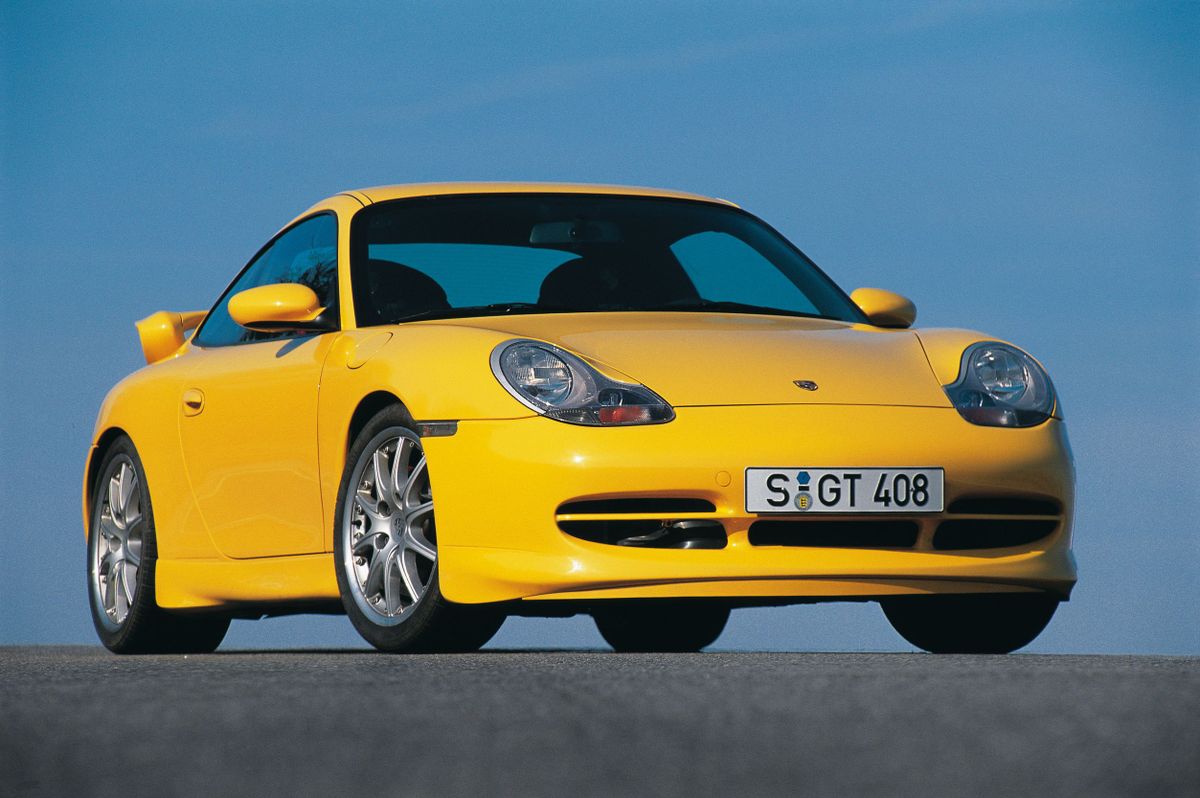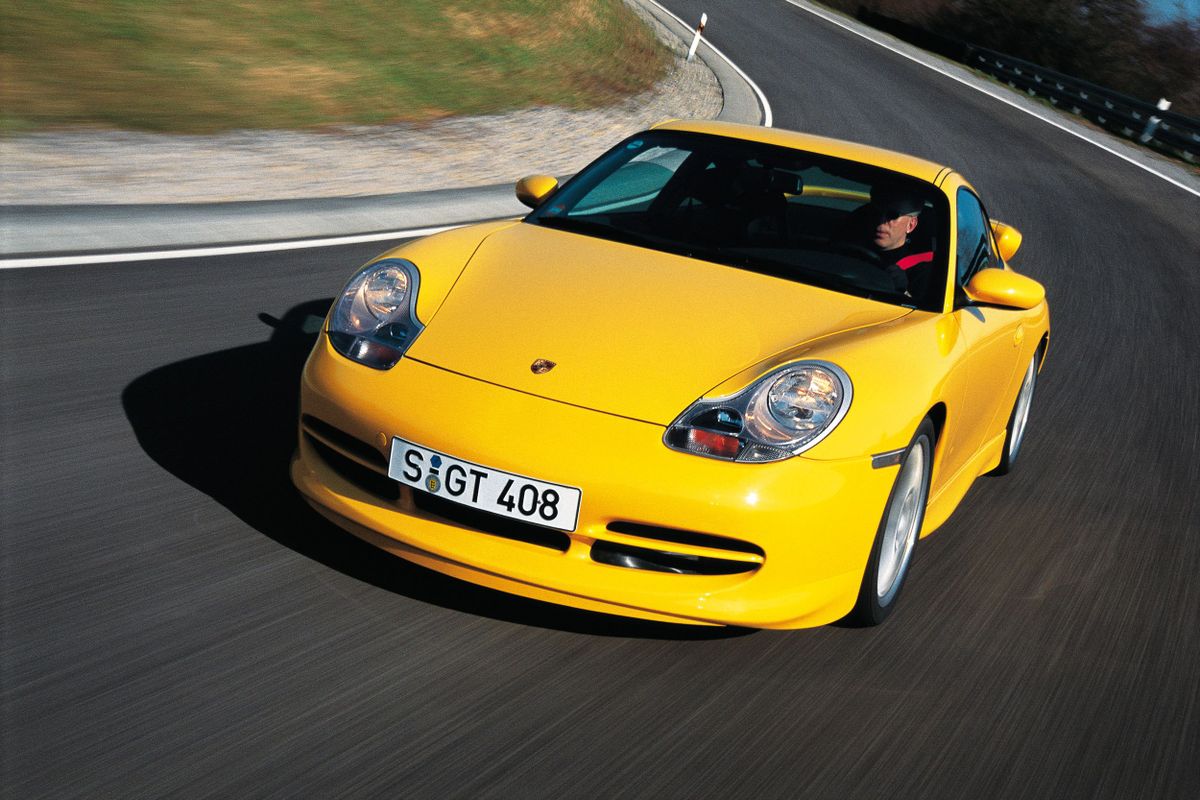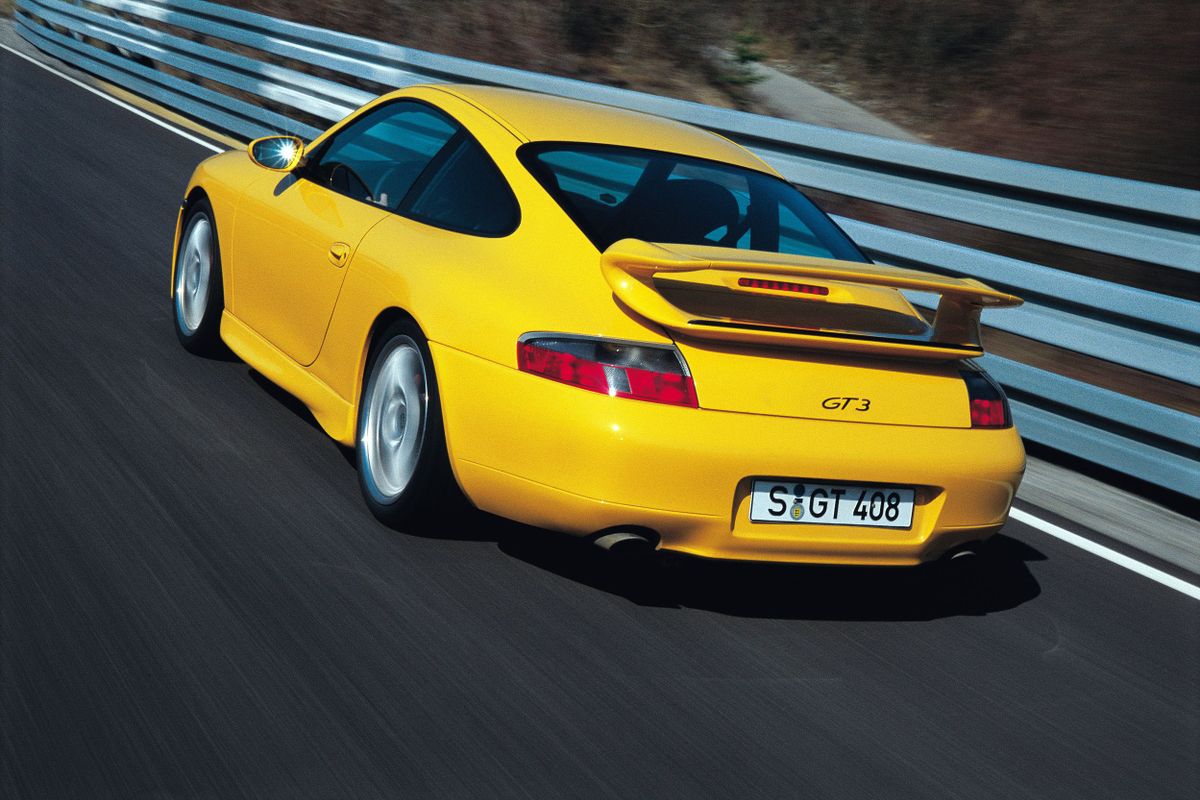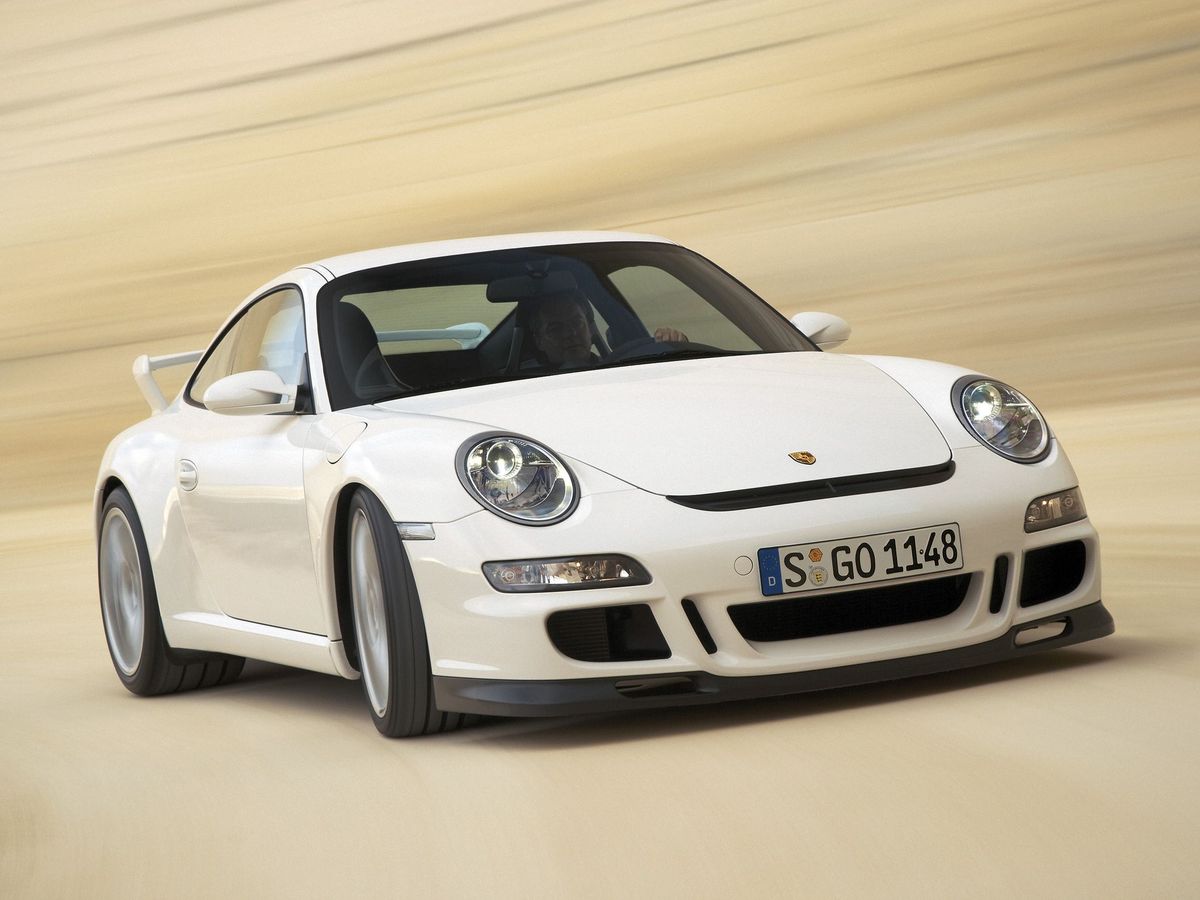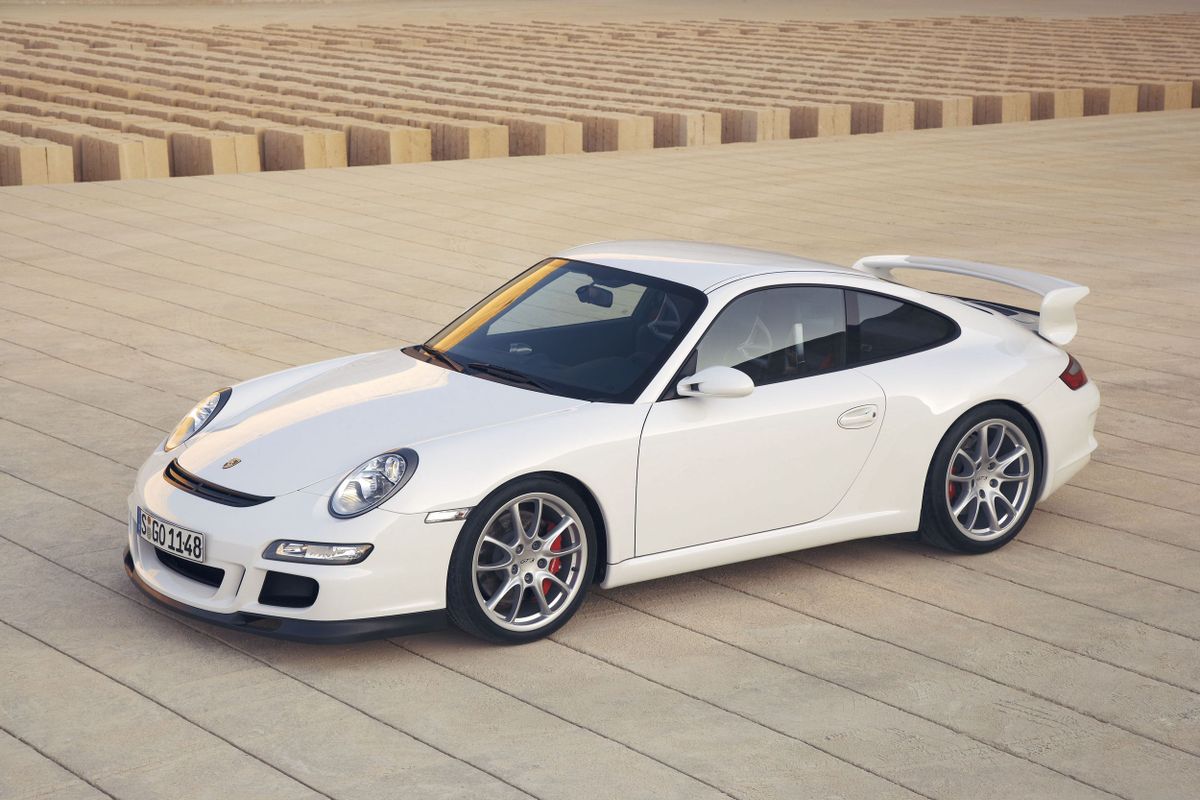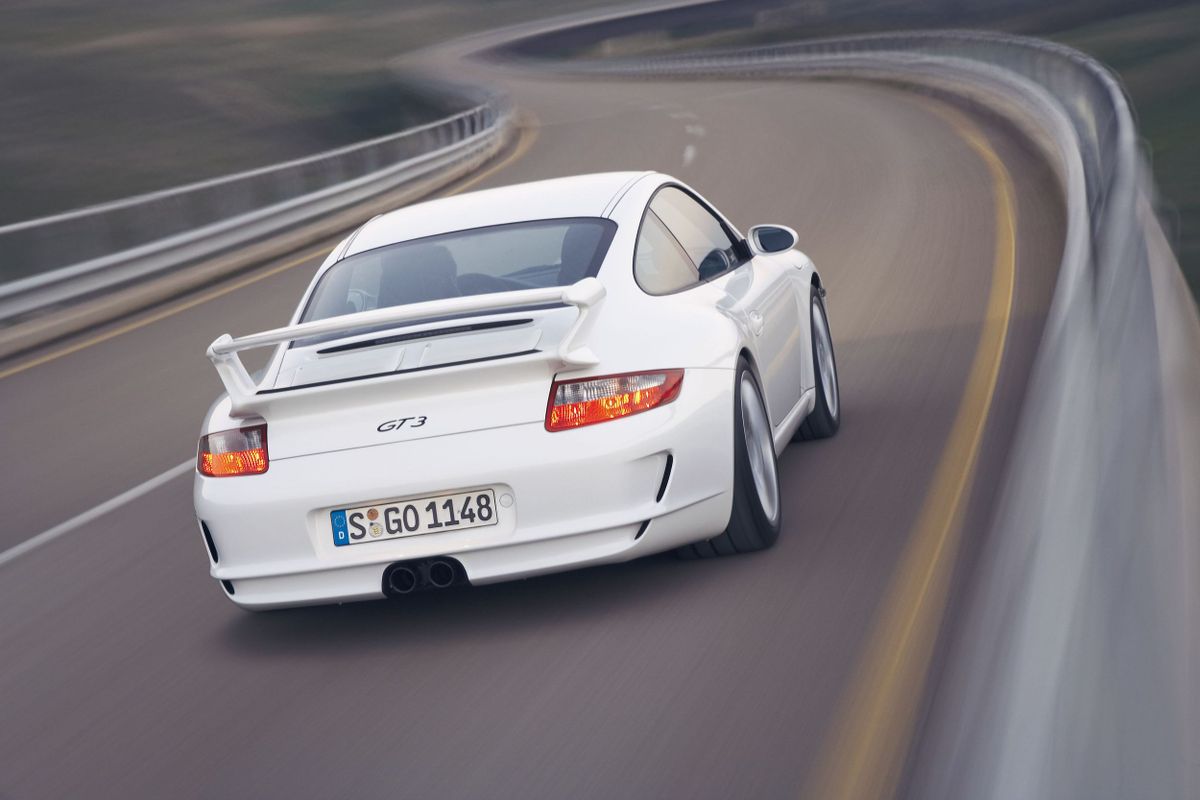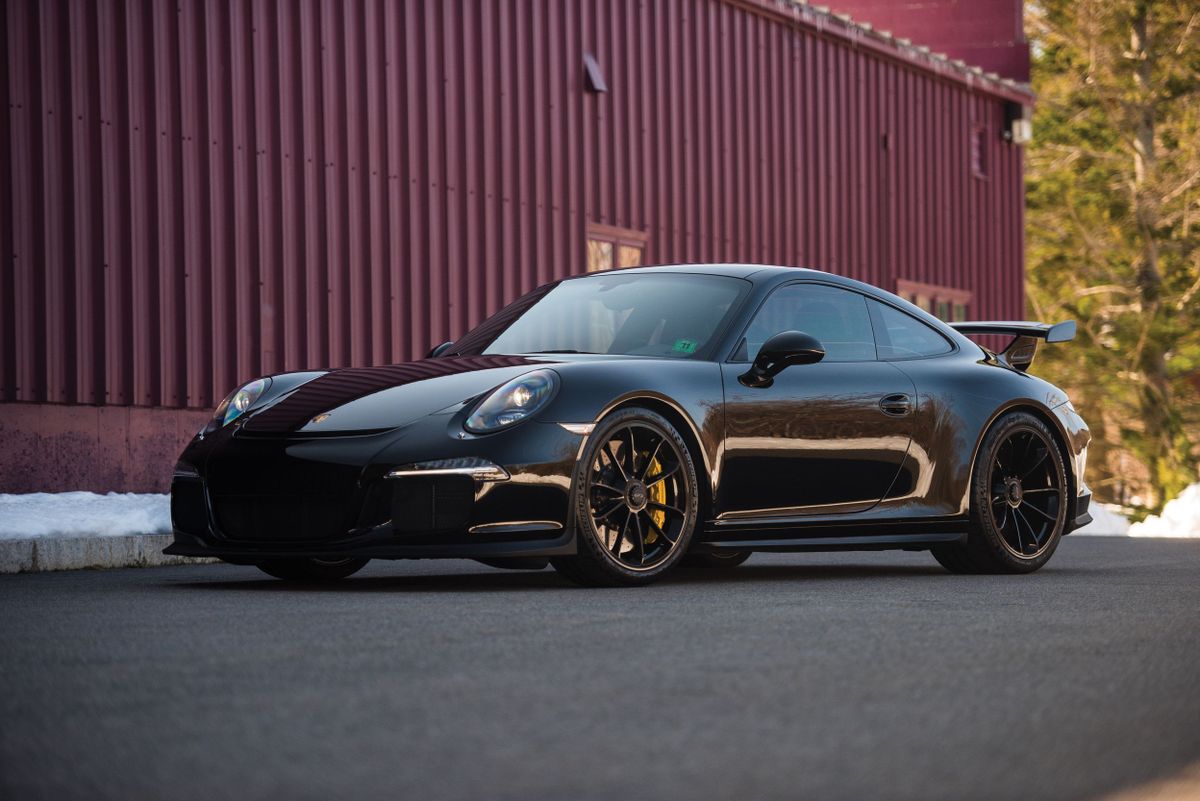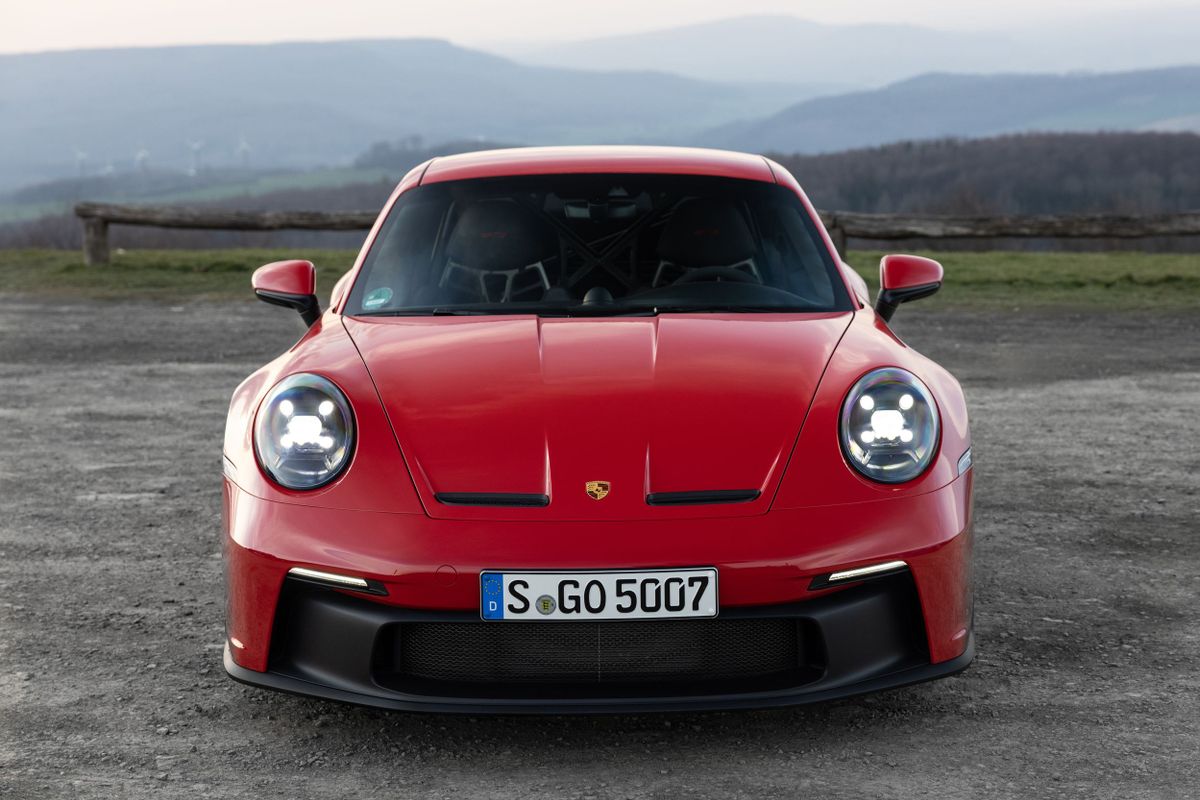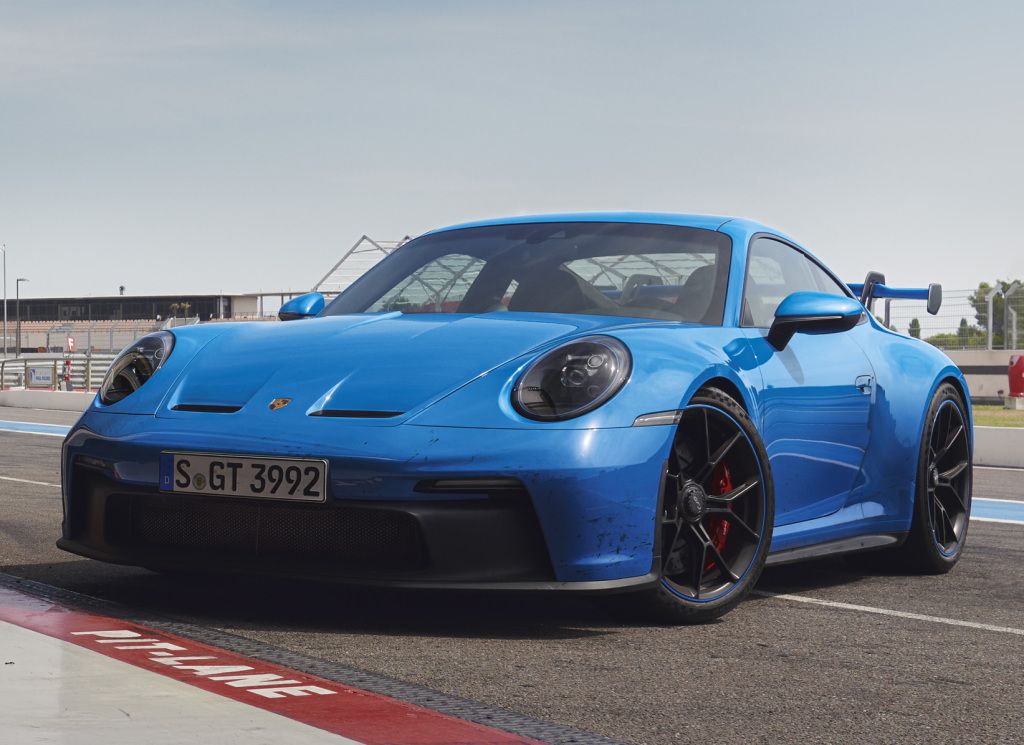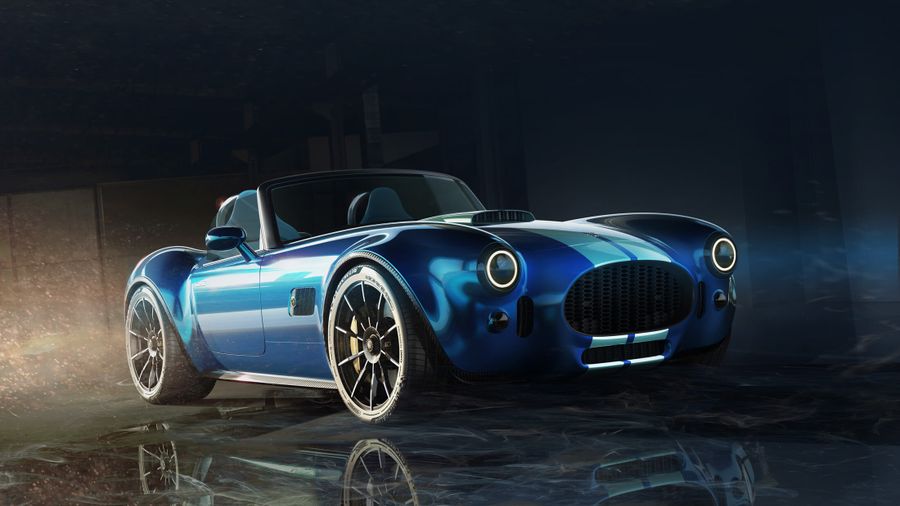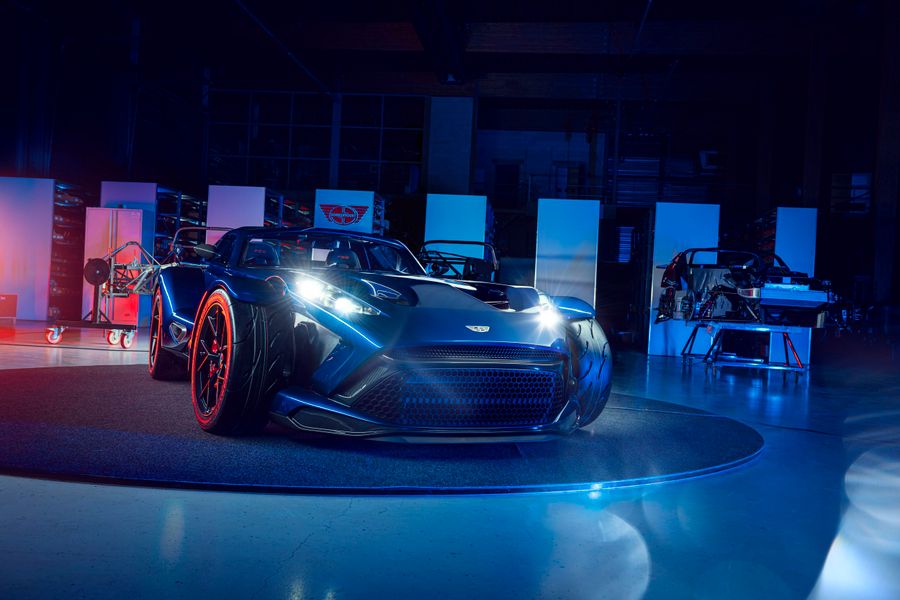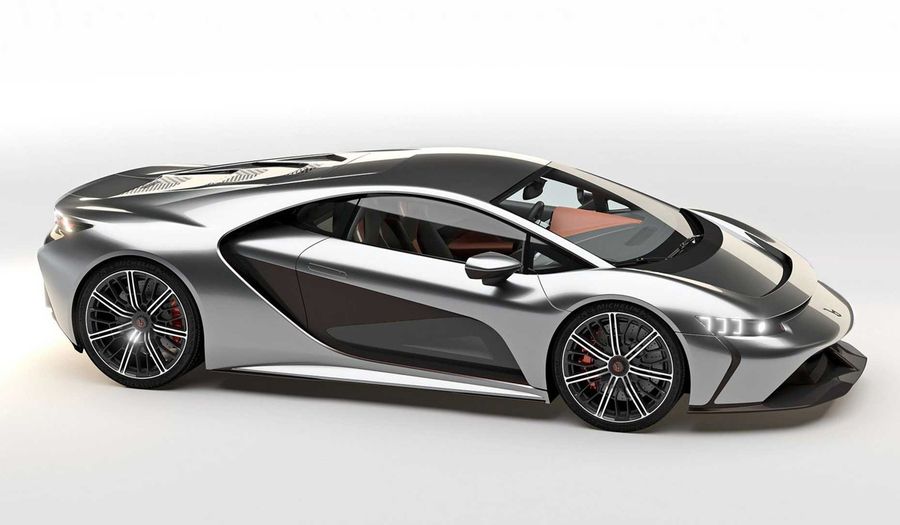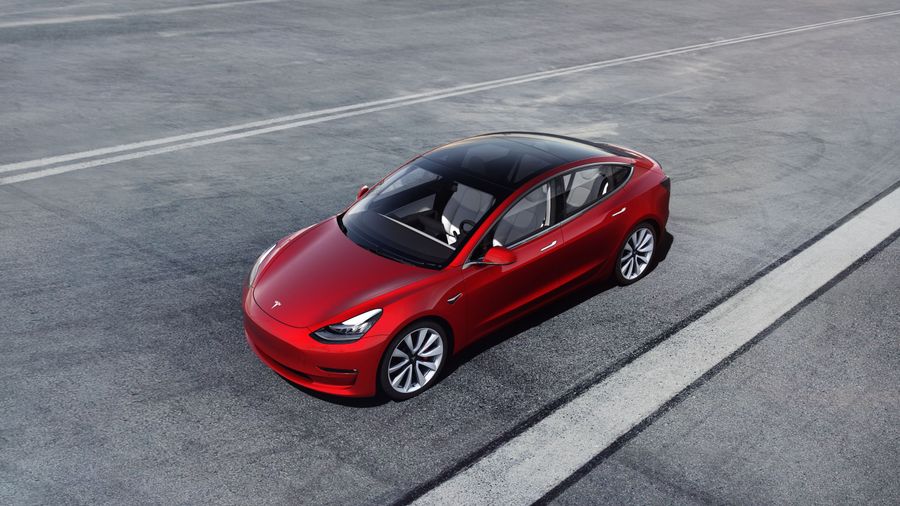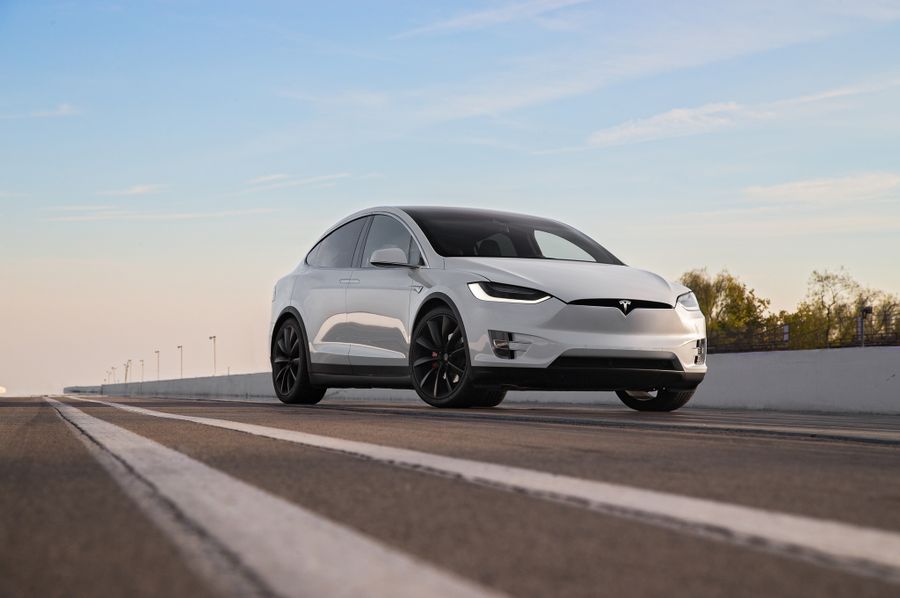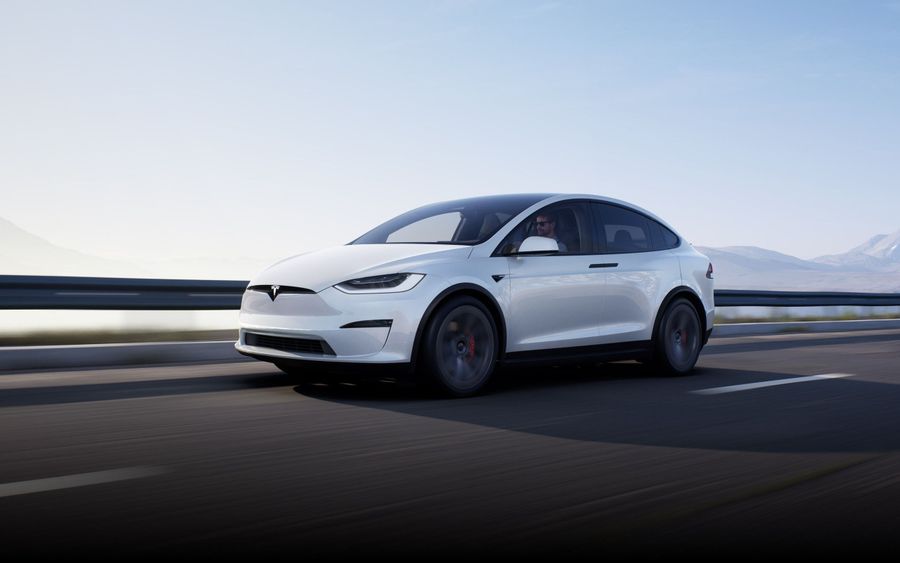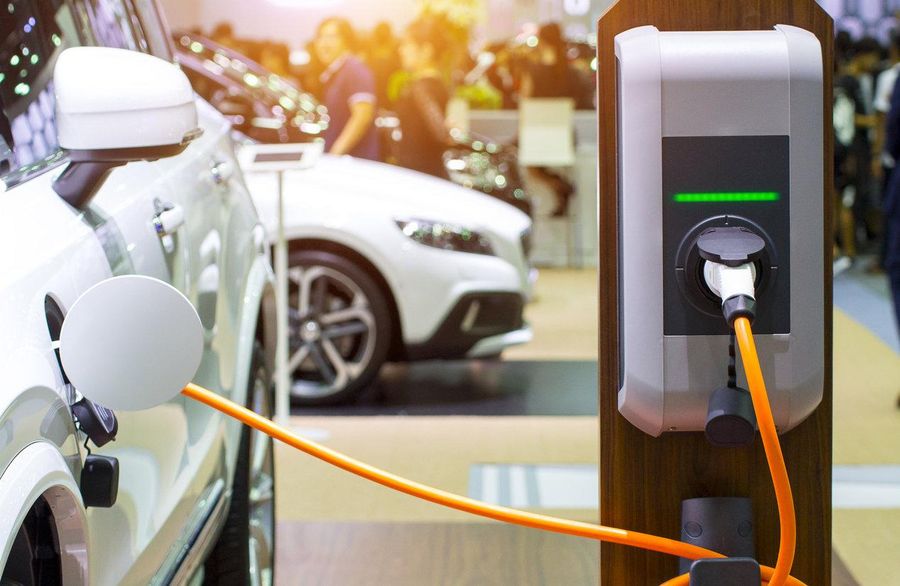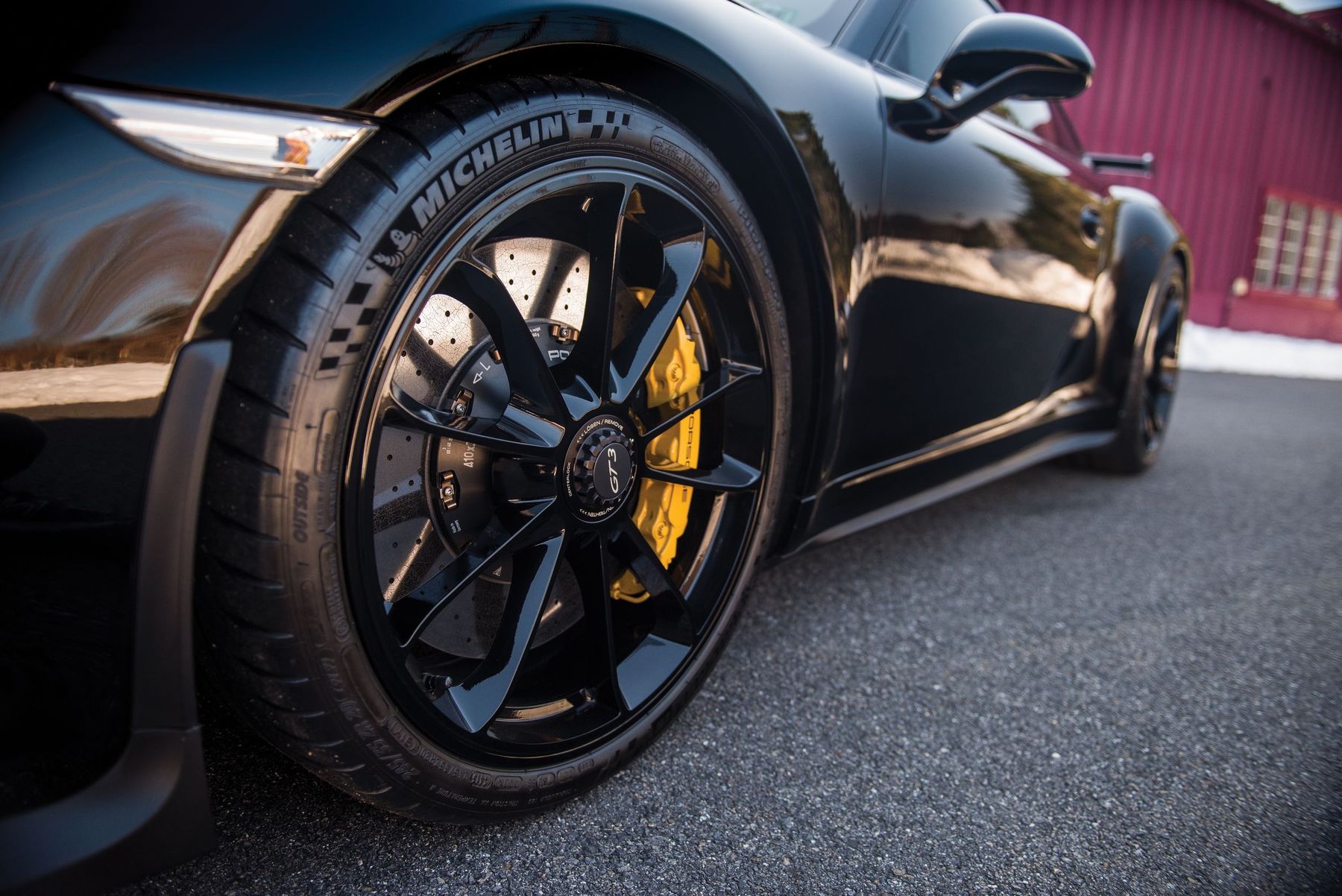
Porsche 911 GT3. Racing sports car on a regular road
The Porsche 911 GT3 is a high-performance rear-wheel drive version of the Porsche 911 sports car. It has been produced as a coupe since 1999. There are currently four generations of the sports car on the market, the last of which was released in 2021.
Porsche’s range of high-performance models started with the 911 Carrera RS in 1973. The first Porsche 911 GT3 premiered at the 1999 Geneva Motor Show. This sports car marked the beginning of a new era for sports car drivers. The GT3 bears the stamp of the Porsche racing division like no other 911. It has had a successful racing career in the national and regional Porsche Carrera Cup and GT3 Cup Challenge series, as well as in the Porsche International Super Cup supporting the FIA Formula 1 World Championship. The GT3 has won many awards in famous endurance races, including the 24 Hours of Daytona and the Nürburgring 24 Hours, which it has won seven times since 2000.
With each new generation, the 911 GT3 is getting faster and more responsive. And it remains, perhaps, the most beloved Porsche 911 with a naturally aspirated engine, manual transmission and rear-wheel drive, which has received permission to operate on public roads. One of the ingredients for the success of the Porsche 911 GT3 is the application of the auto racing experience and innovation to the development of the road version. Not surprisingly, roughly 80% of all 911 GT3s produced are regularly used on the racetrack.
The first generation
Produced from 1999 to 2005, the first generation was developed by two-time world rally champion Walter Röhrl, race engineer Roland Kussmaul and Porsche Motorsport specialists. Therefore, the dynamics of the race tracks are in the GT3’s DNA. The successor to the legendary 911 Carrera RS 2.7, the first GT3 continued its tradition, but, unlike it, did not receive the RS designation (Race Sport). Its name implies an indication of the GT racing class, in which the racing versions of the model were supposed to participate. The 3.6-liter liquid-cooled boxer 6-cylinder engine produced 360 hp. Piloted by Walter Röhrl, the sports car covered the 20.8 km Nürburgring North Loop in less than 8 minutes, setting a new record for road sports cars.
The suspension of the first Porsche 911 GT3 was lowered by 30 mm and the brakes were reinforced. The 6-speed manual transmission was borrowed from the Porsche 911 GT2. The distribution of gears in the gearbox, suspension geometry, anti-roll bars and springs were adapted to the nature of the track. Lightweight construction was a top priority over comfort. The 911 GT3 was particularly distinguished by the fixed spoiler.
With each new generation, the 911 GT3 is getting faster and more responsive. One of the ingredients for the success of the Porsche 911 GT3 is the application of the auto racing experience and innovation to the development of the road version.
The first Porsche 911 GT3 was the basis for the 911 GT3 Cup, as well as for the more radical racing 911 GT3 R and GT3 RSR versions, which in the following years achieved brilliant results in Porsche mono cups and in GT racing. After restyling in 2003, the models acquired the VarioCam continuous variable valve timing system, while the power of the boxer engine increased to 381 hp.
The second generation
It was produced from 2006 to 2011. After the success of the first 911 GT3, Porsche introduced some road sports car modifications with racing genes every three to four years. The output of the 3.6-liter engine of the second generation cars was increased to 415 hp. It was the highest-revving naturally aspirated engine in its class and one of the most highly-powered ones. The second Porsche 911 GT3 was equipped with the Porsche Active Suspension Management (PASM) with sport tuning. In 2009, the capacity of the 6-cylinder boxer engine was increased to 3.8 liters, while the output was increased to 435 hp. The new spoiler shape and full underbody lining made it possible to significantly improve aerodynamics, while increasing the downforce more twice compared to the previous model.
The third generation
It was produced from 2013 to 2020. To mark the 50th anniversary of the Porsche 911, the new generation 911 GT3 premiered at the 2013 Geneva Motor Show. The engine, gearbox, body and chassis were completely new. The 3.8-liter aspirated engine with 475 hp was first combined with the Porsche Doppelkupplung (PDK) dual-clutch transmission. Plus, the car was equipped for the first time with an active rear-wheel steering system. The new 911 GT3 celebrated its debut by completing the Nürburgring Nordschleife in just 7:25 minutes, half a minute faster than the first 911 GT3 that set its record in 1999.
Instead of the PDK, you can choose a manual 6-speed transmission.
The restyled 2017 Porsche 911 GT3 received a 6-cylinder boxer engine, the capacity of which increased to 4 liters, and the output was boosted up to 500 hp. Two new options were introduced. Firstly, there was a chance to select the 6-speed manual transmission instead of the PDK, and secondly, there was a Touring package, in which the fixed spoiler was replaced by an automatically retractable rear spoiler. The Touring looked similar to a limited edition of the iconic 1970s Porsche 911 Carrera RS 2.7.
The fourth generation
It has been produced from 2021 to the present (as of 2021). The new generation was developed in close collaboration with the Porsche Motorsport division. Once again, racing technology has been carried over to the production model. The double wishbone front suspension and refined aerodynamics with inverted Swan Neck spoiler and distinctive diffuser are borrowed from the successful GT racing car, the 911 RSR. A 4-liter 6-cylinder boxer engine with 510 hp is based on the drive of the endurance racer, the 911 GT3 R. This high-revving engine with excellent acoustics is also used on the new 911 GT3 Cup. The resulting car is absolutely impressive: efficient and emotional, responsive and highly dynamic, ideally suited for use on the ring track and practical in everyday life.
The aerodynamics created in compliance with racing experience generates significant downforce without significantly increasing air drag. When set to the Performance position, manually adjustable spoiler and diffuser elements significantly increase aerodynamic downforce for higher cornering speeds. However, this position is only intended for exits to the race track, as this is where the 911 GT3 can reach its full potential. It has set an impressive record at the Nürburgring Nordschleife by completing the circuit in seven minutes. It took test racer Lars Kern just 6:59.927 minutes to complete the full 20.8-kilometer lap.
The new Porsche 911 GT3 accelerates from 0 to 100 km / h in 3.4 seconds.
Despite the wider body, larger wheels and additional technical components, the weight of the new GT3 is quite comparable to the previous model. It weighs 1,418 kg when equipped with a manual transmission, and 1,435 kg with the PDK. The front cover made of carbon fiber reinforced plastic (carbon), lightweight glass, optimized brake discs and forged alloy wheels and a rear compartment cover contribute to the lower weight. A lightweight sports exhaust system saves another 10 kg. Equipped with electrically infinitely variable changeover flaps, it creates a unique emotional sound.
The vibrant sporting character of the 2021/2022 Porsche 911 GT3 comes from its qualities. With a top speed of 320 km / h (318 km / h with the PDK), it is even faster than the previous 911 GT3 RS. The new 911 GT3 accelerates from 0 to 100 km / h in 3.4 seconds. For those who love special sporty sensations, Porsche offers a 6-speed manual transmission.


